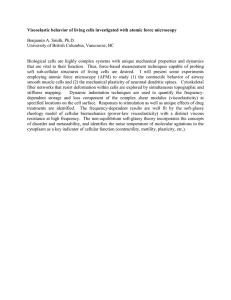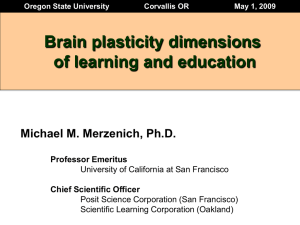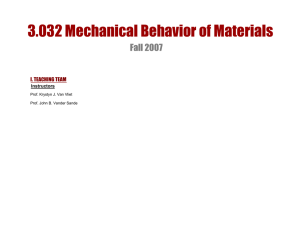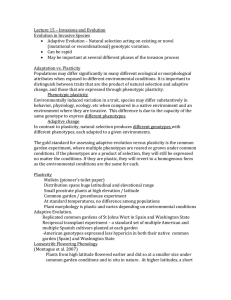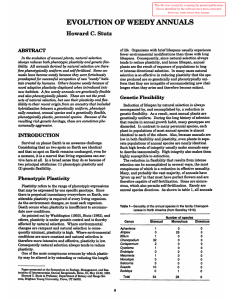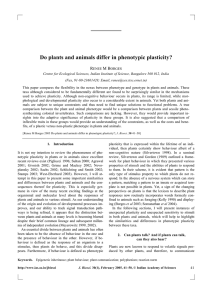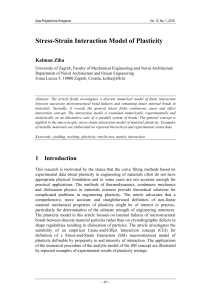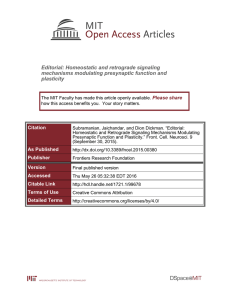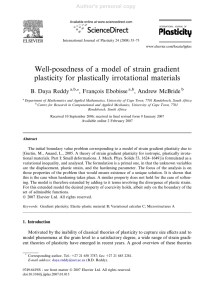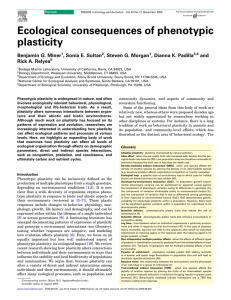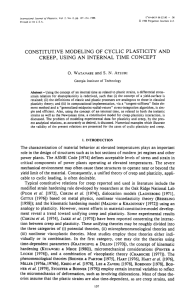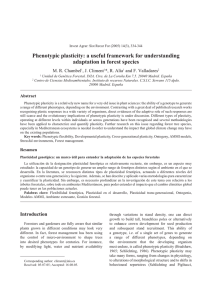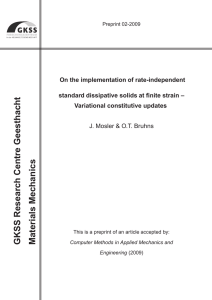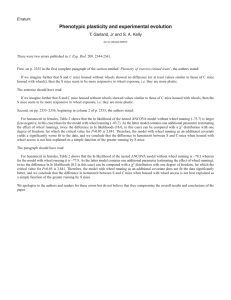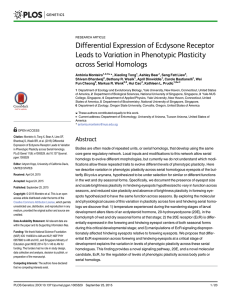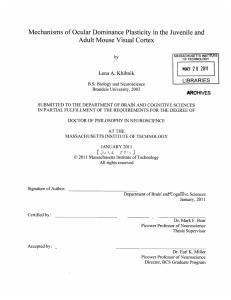Neuroscience and Behavior 301 Senior Seminar on Plasticity Fall 2010
advertisement
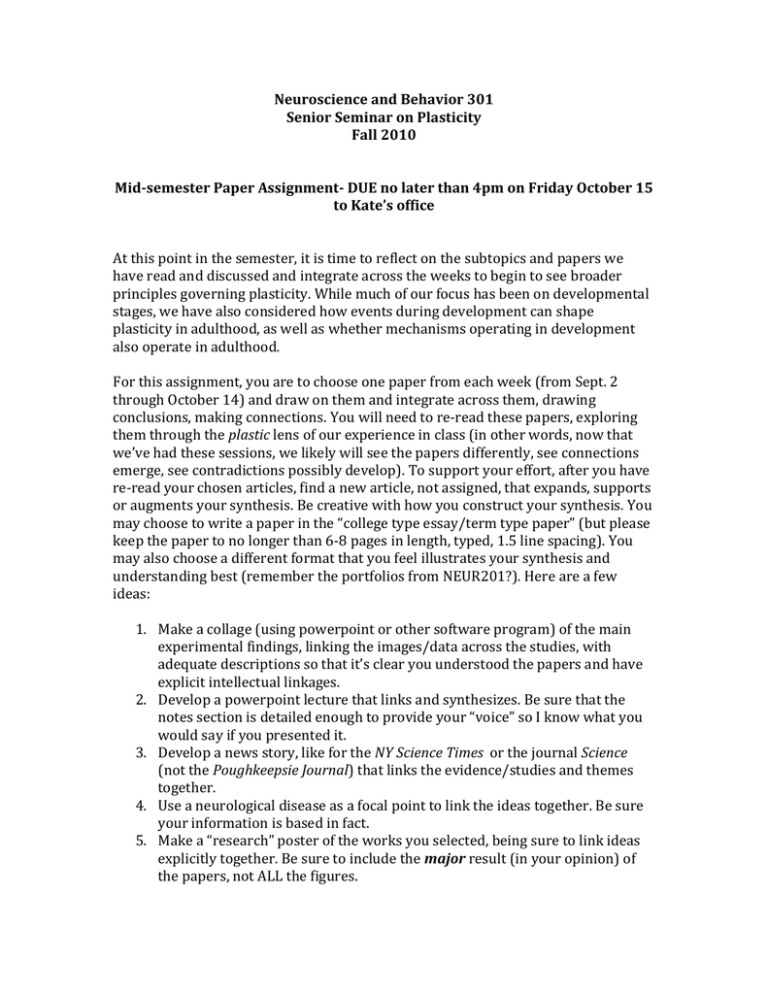
Neuroscience and Behavior 301 Senior Seminar on Plasticity Fall 2010 Mid-semester Paper Assignment- DUE no later than 4pm on Friday October 15 to Kate’s office At this point in the semester, it is time to reflect on the subtopics and papers we have read and discussed and integrate across the weeks to begin to see broader principles governing plasticity. While much of our focus has been on developmental stages, we have also considered how events during development can shape plasticity in adulthood, as well as whether mechanisms operating in development also operate in adulthood. For this assignment, you are to choose one paper from each week (from Sept. 2 through October 14) and draw on them and integrate across them, drawing conclusions, making connections. You will need to re-read these papers, exploring them through the plastic lens of our experience in class (in other words, now that we’ve had these sessions, we likely will see the papers differently, see connections emerge, see contradictions possibly develop). To support your effort, after you have re-read your chosen articles, find a new article, not assigned, that expands, supports or augments your synthesis. Be creative with how you construct your synthesis. You may choose to write a paper in the “college type essay/term type paper” (but please keep the paper to no longer than 6-8 pages in length, typed, 1.5 line spacing). You may also choose a different format that you feel illustrates your synthesis and understanding best (remember the portfolios from NEUR201?). Here are a few ideas: 1. Make a collage (using powerpoint or other software program) of the main experimental findings, linking the images/data across the studies, with adequate descriptions so that it’s clear you understood the papers and have explicit intellectual linkages. 2. Develop a powerpoint lecture that links and synthesizes. Be sure that the notes section is detailed enough to provide your “voice” so I know what you would say if you presented it. 3. Develop a news story, like for the NY Science Times or the journal Science (not the Poughkeepsie Journal) that links the evidence/studies and themes together. 4. Use a neurological disease as a focal point to link the ideas together. Be sure your information is based in fact. 5. Make a “research” poster of the works you selected, being sure to link ideas explicitly together. Be sure to include the major result (in your opinion) of the papers, not ALL the figures. 6. Write a mini-review article (again, no longer than 6-8 pages as above). Minireviews often have a viewpoint or binding issue (your synthesis is your binding). Current Opinion in Biology, Trends in Neurosciences are journals that have these small reviews that might give you ideas about formatting. Select three or so figures from the papers to illustrate major aspects you develop. You will need to provide a bibliography of the articles you choose to focus on. In addition, please provide the new article you select as a pdf to me or a hard copy (but I understand that paper/toner costs a lot, so the pdf emailed to me is fine).





